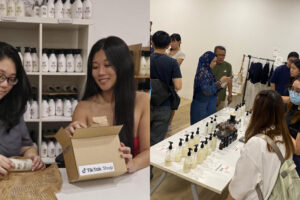
SINGAPORE: Singapore’s food stockpiles are meant for security purposes for the country and are not to be used to influence food prices in the market, said Senior Minister of State for Sustainability and the Environment Zaqy Mohamad.
These stockpiles of essential food items “serve as a buffer” to ensure that the country’s basic needs can be met during times of food supply disruptions, such as pandemics as well as longer-term situations like wars or blockades, said Mr Zaqy in parliament on Thursday (Nov 6).
At the same time, Singapore’s food stockpiles are not intended as a “mechanism to influence food prices” and are not meant to “flood the market” to drive prices down, Mr Zaqy explained.
He was responding to questions by MP Foo Cexiang (PAP-Tanjong Pagar) and MP Hany Soh (PAP-Marsiling-Yew Tee) on how stockpiled food is used and whether there was scope to mitigate rising food supply prices faced by merchants and hawkers.
Ms Soh said the F&B businesses she spoke to are deliberating if they should transfer the higher costs to consumers, which would “invariably” affect cost of living.
To this, Mr Zaqy said the food price mechanism is separate from Singapore’s move to stockpile food for contingencies.
“We should distinguish between stockpiling and price mechanisms for food and other supplies, because we should not then mess around with our stockpiles to try to influence food prices across Singapore,” Mr Zaqy said.
In fact, the government’s key consideration in stockpiling food is to not disrupt the market, he added.
The national stockpile currently consists of rice, frozen proteins and canned vegetables. Alternative proteins are not stockpiled.
Presently, a mandatory stockpiling requirement is imposed on private sector rice importers.
Singapore passed a food safety and security law earlier this year enabling the authorities to subject more food types apart from rice to this stockpiling requirement if the need arises in the future, though no such decision has been made yet.
Authorities regularly conduct “churns” to keep the stockpiles adequate and safe for consumption, which means that older stocks are removed from the stockpile and replenished.
“We churn out through the commercial players, aiming not to disrupt the market,” Mr Zaqy said, adding that the authorities try to do as efficiently as possible.
“Rest assured that the government does its best to minimise impact to food prices, to minimise impact to the private sector, but at the same time keeping food safe in our stockpiles,” he added.
STOCKPILING A KEY PILLAR OF FOOD SECURITY
On Tuesday, Minister for Sustainability and the Environment Grace Fu announced that Singapore will replace its “30 by 30” food sustainability goal with new targets for specific food types amid a move to refresh the country’s food resilience strategy.
The new strategy builds on the three aspects – growing food, diversifying imports and stockpiling.
“Where stockpiling is concerned, it is where it is most critical, and we draw down only when it’s most critical,” Mr Zaqy said.
In response to Mr Foo’s question on strategies used to ensure zero food waste, Mr Zaqy said the government has not yet achieved it but is working towards it as a target.
This is done by working closely with the private sector to ensure proper storage conditions. The churning process also ensures that stockpiled food is safe while minimising food wastage, he said.
He added that there are occasions where food is “disposed” through large-scale food donations such as humanitarian efforts.
“We work towards zero waste. I’m not going to say zero waste today, but we are working towards zero waste as we minimise some of these food churn.”





